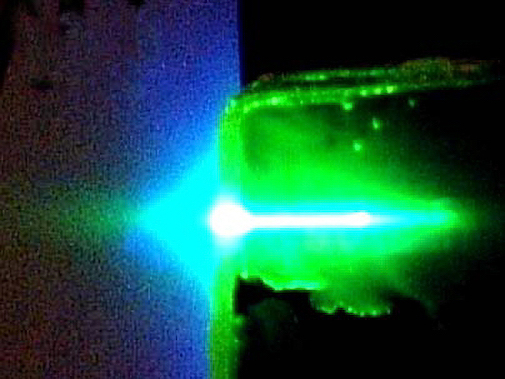Ultrasensitive Explosives Detection

A sensor film made of a novel semiconducting organic polymer undergoes a lasing process when exposed to ultraviolet light. When TNT is present, it binds to the polymer and quenches the beam. (Image: MIT)
A novel chemosensing platform based on “lock-and-key” conjugated nanostructured amplifying fluorescent polymers (AFPs) pioneered by MIT Professor Timothy Swager, deliberately designed to enable long-range and rapid exciton coupling to analyte trap states, provides the unique scientific foundation for the Fido line of sub-parts-per-billion explosives detectors that sense tiny particles or trace amounts of vapor emanating from explosive materials like TNT.
Initially examined as part of the DARPA Dog’s Nose program and quickly folded into the ISN research portfolio after the ISN’s 2002 founding, Swager’s AFP technology was the basis for startup company Nomadics, which advanced the technology and initially brought it to market. Nomadics, and the Fido product line, was acquired by ICx Technologies, which was acquired later by FLIR Systems. A subsequent acquisition by Teledyne Technologies resulted in the formation of Teledyne FLIR, which now manufactures the Fido.
Named one of the Army’s 10 greatest inventions for both 2005 (standalone device) and 2006 (robot-integrated device), early iterations of the device were tested at Ft. Leonard Wood in Missouri and Arizona’s Yuma Proving Ground; used in training at the USMC’s Camp Lejeune; and fielded in Iraq, Afghanistan, and at US ports of entry.
The modern, multianalyte Teledyne FLIR Fido X4 is used for threat detection by US police and military forces and, when integrated with an unmanned robotic platform, for remote assessment and ordnance disposal.

